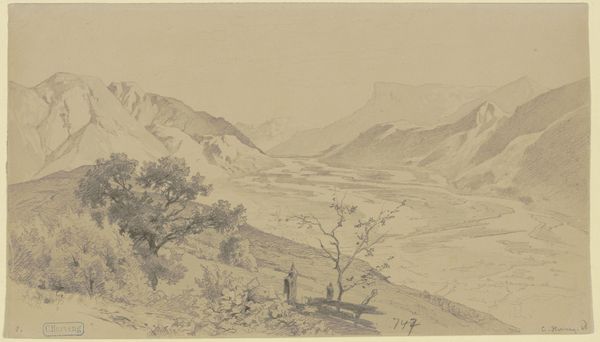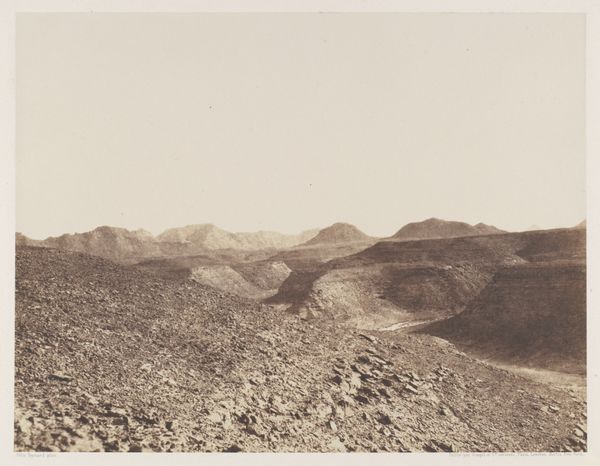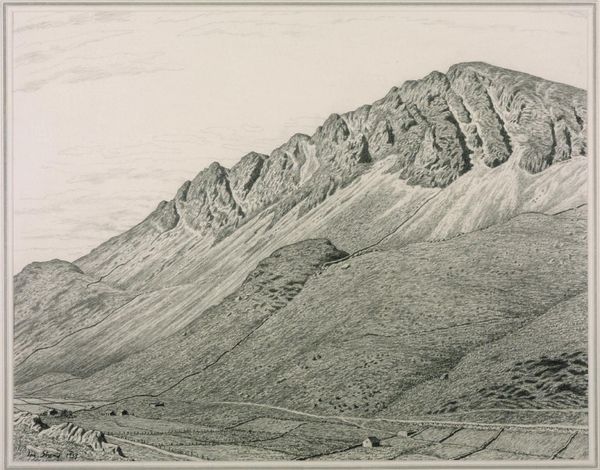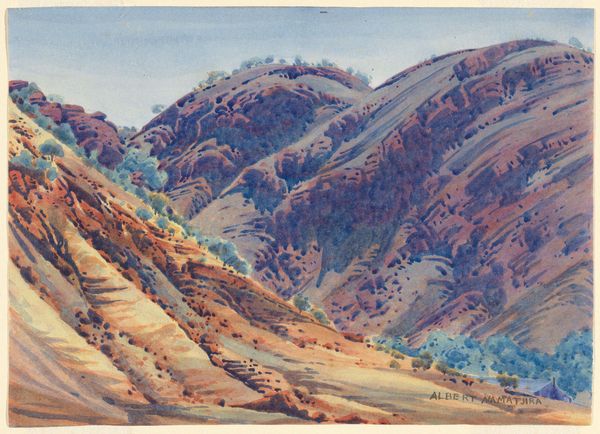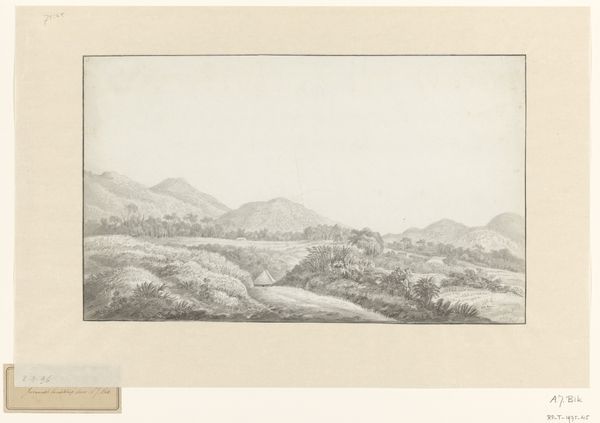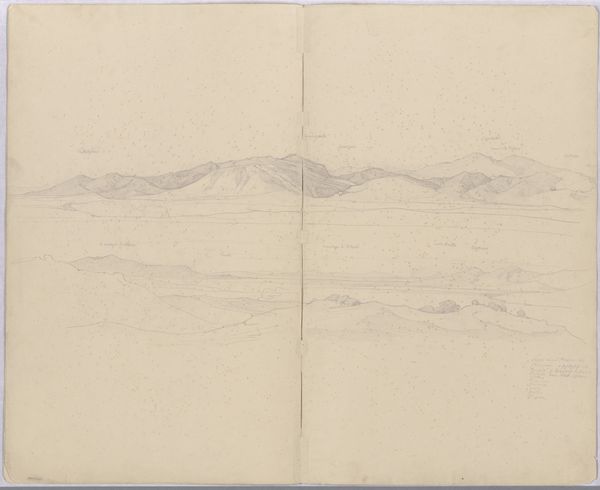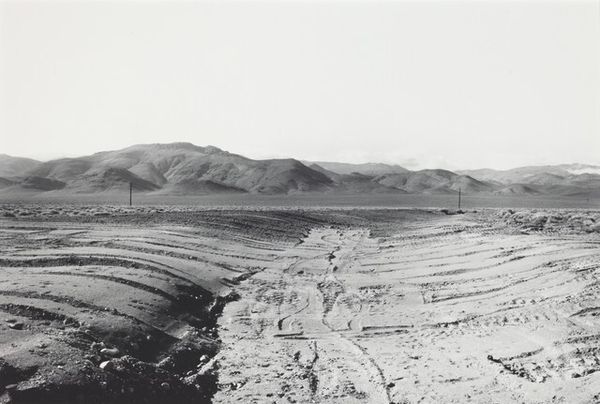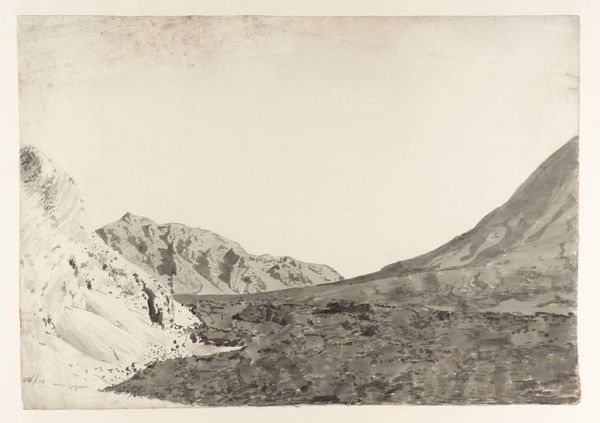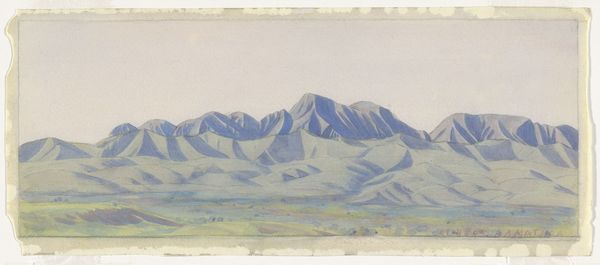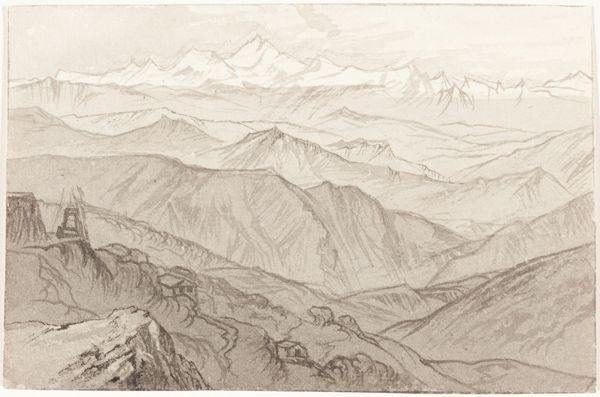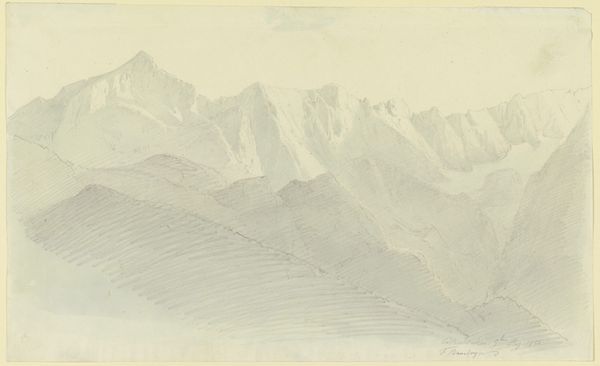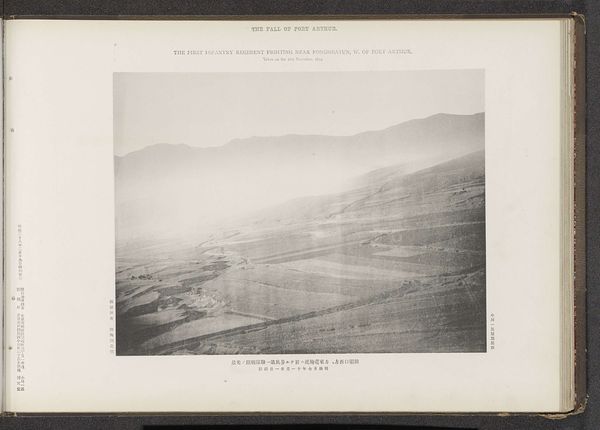
drawing, print, etching, pencil
#
drawing
# print
#
etching
#
landscape
#
pencil drawing
#
pencil
#
realism
Dimensions: plate: 12.2 x 17.3 cm (4 13/16 x 6 13/16 in.) sheet: 18.1 x 22.3 cm (7 1/8 x 8 3/4 in.)
Copyright: National Gallery of Art: CC0 1.0
Editor: This is "Dunes near Palm Springs, California (no.2)," an etching done around 1934 by George Elbert Burr. It's really striking how he captures the immensity of the desert with such delicate lines. What do you see in this piece, especially considering the time it was made? Curator: I'm immediately struck by how Burr utilizes light and shadow to evoke the desert’s silence. Dunes have always been a potent symbol – consider their association with pilgrimage, barrenness, and spiritual questing across various cultures. Does the repetition of the dunes evoke a particular emotional state for you? Editor: Definitely a sense of solitude, maybe even a little lost. The dunes almost seem to go on forever. Is there any particular historical context that influences your interpretation of those symbols? Curator: The 1930s was a period of great social and economic upheaval, marked by the Dust Bowl in America. The landscape in this print perhaps echoes collective anxieties about loss and the fragility of life. Burr is not simply depicting a scene, but reflecting the cultural anxieties of a nation. Look at the mountains looming in the background; what feelings do they suggest? Editor: I guess they provide some grounding amidst all that shifting sand. A reminder that even in the harshest environments, there's something constant and enduring. I wouldn’t have picked up on those connections initially. Curator: It's fascinating how visual symbols can tap into our cultural memory. How an image of a desert, for instance, isn’t simply a landscape but a repository of collective human experiences and meanings accumulated over time. What will this image suggest to viewers in the future? Editor: I imagine those future viewers might also think of climate change and environmental fragility when seeing this landscape, adding new layers to its meaning. It really changes the way I look at art when I consider the symbols within the cultural context. Thanks for sharing that perspective! Curator: The image evolves through time, and it is exciting to witness this evolution and to uncover some of the hidden symbolic weight, too!
Comments
No comments
Be the first to comment and join the conversation on the ultimate creative platform.
